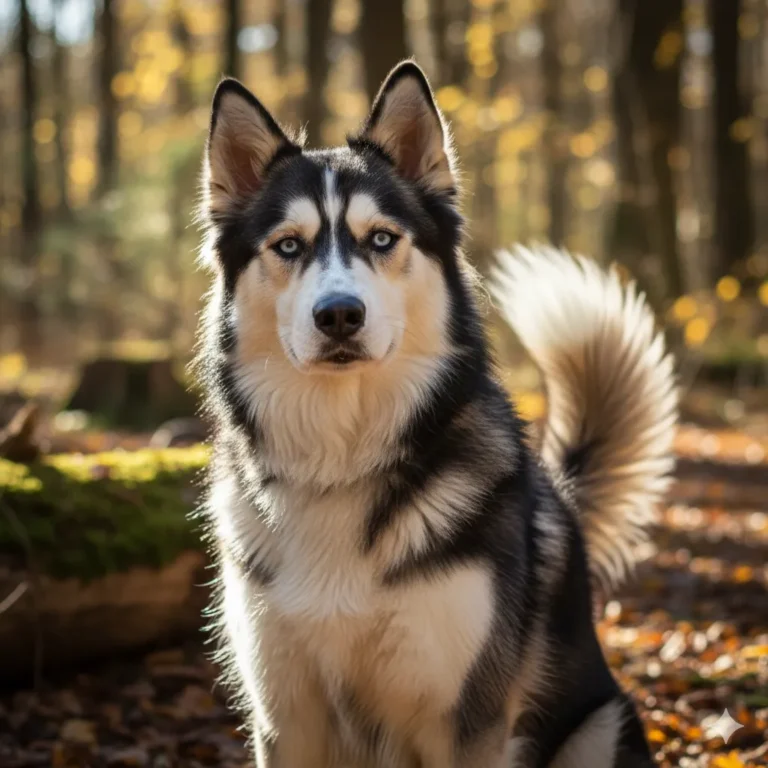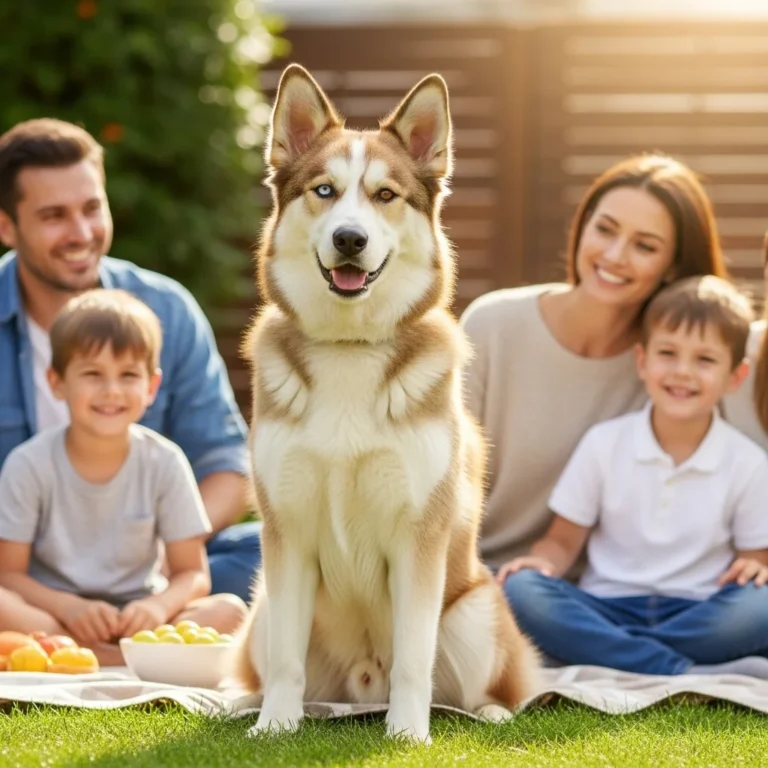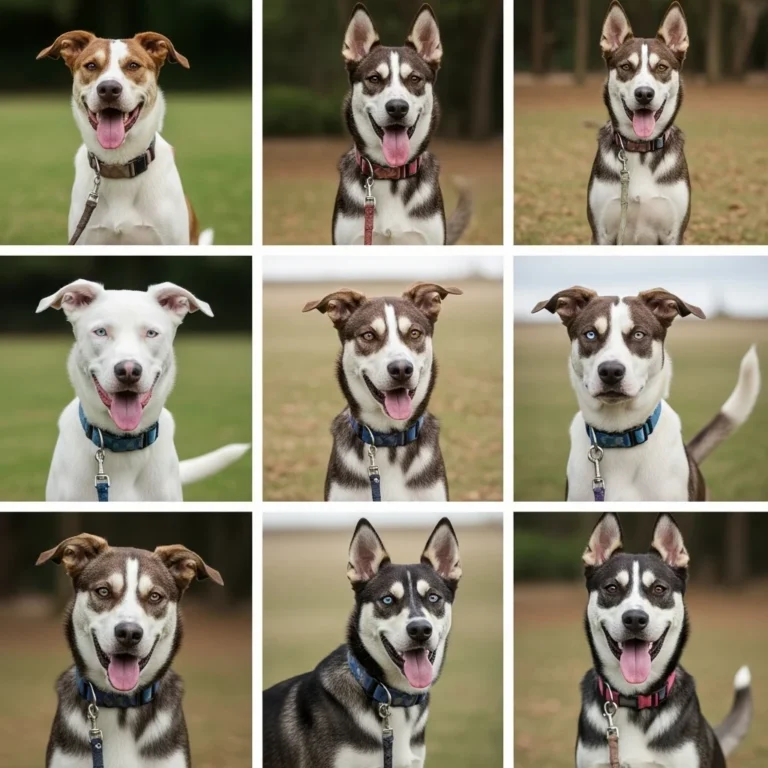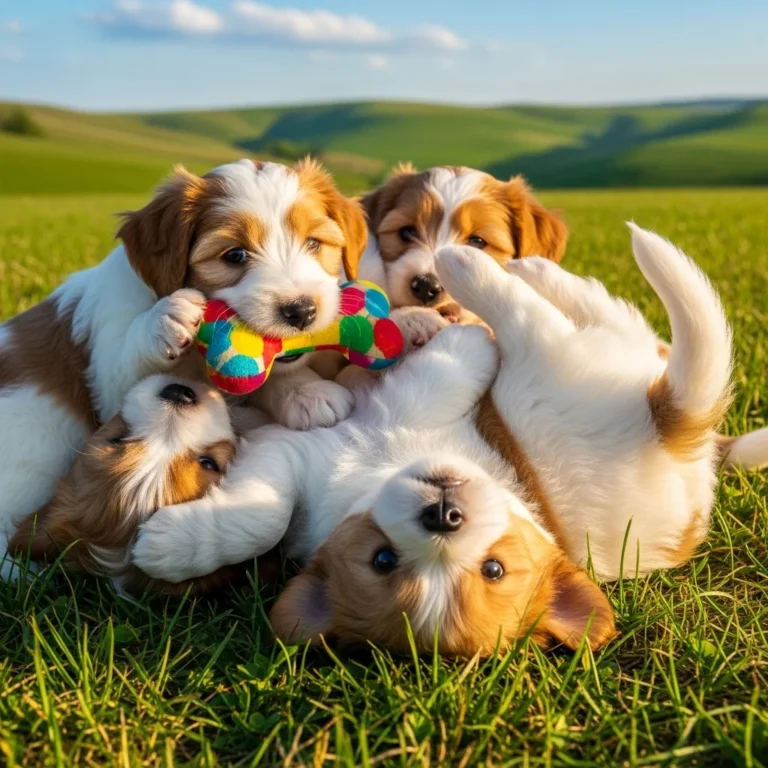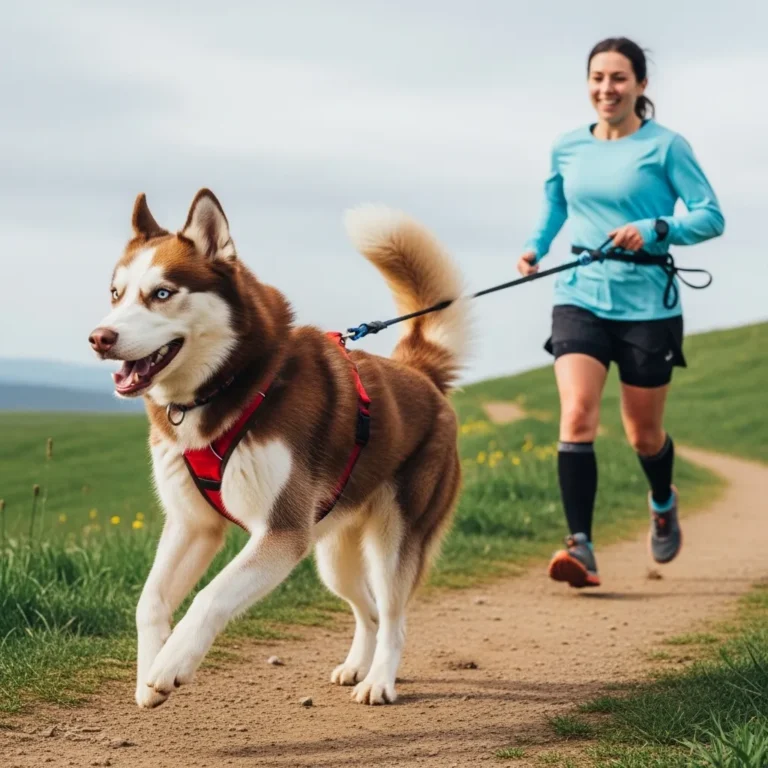
Author: DogsBlogSS Team
⚠️ Disclaimer: This article is for informational purposes only and is not a substitute for consulting a veterinarian.
brown husky
When you first lay eyes on a brown husky, there’s a moment of pause—a curious double-take. Is it really a husky? That rich chocolate hue, the striking eyes, the confident stance—it all feels a little wild, a little rare, and completely captivating. It’s easy to fall under the spell of this coat color, especially if you’re drawn to dogs that are as expressive in appearance as they are in personality.
In this article, I’ll walk you through everything you need to know about the brown husky: what makes it unique, how it behaves, how to care for one, and whether it might be the right companion for you. I’ll draw on expert advice, real-world examples and community wisdom to give you a friendly yet detailed guide.
I. Understanding Brown Huskies: Breed & Appearance
Are brown huskies rare?
Yes—they are definitely less common than the more classic black-and-white or grey-and-white variants of the Siberian Husky. While the breed standard allows a wide variety of colors (from black to white and many shades in between) According to Hill’s Pet Nutrition+2Siberian Husky Rescue+2, fully brown or deep chocolate coats tend to catch extra attention.
For instance, one article described a “chocolate-brown Siberian Husky” as “extremely rare” and that everywhere they went people asked: “What is he?” According to Medium
So if you spot a brown husky, you’re seeing something special—though you’ll want to make sure it’s genuinely a Siberian Husky (or a recognized variation) and not simply a different breed or mix.
Do huskies come in brown?
They absolutely do. According to expert resources on coat-color genetics, what is often referred to as “red” in huskies can actually involve brown pigment replacing what would be black pigment in other color types. According to Siberian Husky Color+1
Further, a breed-specific article on “Brown Husky” outlines that yes, this color is present and has its own nuances. According to DogAcademy.org
So when you see brown in a husky coat, it isn’t a fluke or mis-label—it’s part of the breed’s palette (though less common).
What is a brown husky called?
There’s no single official alternate name universally adopted simply for a “brown husky,” but many breeders and aficionados refer to these dogs as “chocolate huskies,” “liver-point huskies,” or simply “brown huskies” (descriptive rather than formal). For example:
- A dog platform describes “Solid Brown Husky” as a recognized variant in some specific breeding lines.According to Husky Palace
If you’re looking for one, you might also see terms like “red husky” used—but keep in mind that “red” in this context often overlaps with brown pigment. According to Siberian Husky Color
What makes a husky brown?
Here we’re talking genetics, pigment, and breeding history—but in plain language:
- In huskies, coat color is influenced by how black pigment (eumelanin) or red/brown pigment (pheomelanin) are expressed. According to Siberian Husky Color
- When the gene combinations reduce or replace black pigment with brown, you get the brown/chocolate appearance. The same base breed standard applies—double coat, erect ears, typical husky build—but the color is less seen.
- Other factors like dilution genes, markings (white chest, legs), and even eye color interplay to create the full appearance.
So in short: a brown husky gets its look via the same mechanisms as other huskies—but the pigment path shifts toward brown instead of black.
Do brown huskies have blue eyes?
Yes, they can—and this is one of the most striking combinations. The dog I mentioned earlier (the “chocolate-brown Siberian Husky” story) had piercing blue eyes and a full brown coat, which many people found surprising since they expected brown-eyed dogs with brown coats. According to Medium
More broadly, the Siberian Husky breed admits eye colors from brown, blue, one of each (heterochromia), or even parti-eyes. According to Hill’s Pet Nutrition+1
So yes: a brown husky can have blue eyes—and it’s part of what makes the look so memorable.
What is the difference between a brown husky and a red husky?
Here’s where things get a bit nuanced—and where it helps to think of “red” and “brown” as overlapping terms rather than strictly distinct. According to husky genetics:
- The term “red” often denotes a shade where brown pigment replaces black pigment—so in many cases, what’s called “red” is visually very similar to brown. According to Siberian Husky Color+1
- Some might refer to a lighter auburn or copper coat as “red,” whereas deeper chocolate tones are labelled “brown.” For instance, a listing talks about “auburn, mahogany” shades for brown huskies. According to DogAcademy.org
So in practice: a “red husky” may have a lighter copper-toned coat, while a “brown husky” may have a deep chocolate or liver-colored coat—but the lines are blurry. The important thing is understanding the pigment shift rather than focusing too much on the label.
Are there different shades of brown huskies?
Yes, absolutely. Brown huskies may present a variety of tones—think of the difference between milk chocolate, dark chocolate, mahogany, or a lighter auburn brown. According to one breed profile:
“Their coat can be a lovely shade of brown, auburn, or mahogany.” According to DogAcademy.org
Additionally, how the undercoat and guard hairs contrast (or don’t) influences how “rich” the brown appears. Some may also have white markings on chest, feet, mask, which can enhance or soften the visual contrast.The takeaway: if you’re browsing for a brown husky, pay attention not just to “brown” but to the intensity, undertone and overall markings.
What does a brown husky look like?
Put all of the above together, and you have this:
- Medium-sized, alert body typical of a Siberian Husky: erect triangular ears, bushy tail often curled over the back, dense double coat. According to Hill’s Pet Nutrition+1
- Coat color: dominant brown/chocolate tone. Could be solid brown (rare) or brown with white markings (more typical: chest, feet, facial mask) as described in specific solid brown listings. According to Husky Palace
- Eye color: one or both eyes may be blue, brown, or mixed—creating that “wolf-meets-storybook” look.
- Behavior and stance: confident, alert, athletic. Because of their working heritage, they often look ready to move, explore, pull, or run.
So visually: a brown husky is unmistakable—not just because of the coat color, but because of the classic husky silhouette filtered through a less-common pigment palette.
II. Temperament & Behavior of Brown Huskies
What is the temperament of a brown husky?
Since brown huskies are essentially the same breed as other huskies (with the color being the main difference) their temperament aligns with what you expect from the Siberian Husky: friendly, playful, energetic, intelligent. For example:
- The breed profile for huskies describes them as “intelligent, playful and very friendly… Crave company and love nothing more than spending as much time as possible with their owners.” According to petplan.co.uk
- A brown-husky-specific article says: “Brown huskies are friendly and love to play, and they’re also highly intelligent.” According to DogAcademy.org
In other words: get ready for a dog who wants to interact, be part of your world, and has a personality that’s more “crew member” than “watchdog”.
Are brown huskies aggressive?
Generally speaking—no, they are not predisposed to aggression simply because of their color. Huskies in general are known more for their sociability than guard-dog tendencies. From one source:
“Despite their resemblance to the wolf, Huskies typically have a friendly temperament.” According to huskyhouse.org
That said, “not aggressive” doesn’t mean “easy without oversight.” Key points:
- Huskies have a strong prey drive and high energy. If their needs are unmet (exercise, mental stimulation, training), they may engage in destructive behavior, digging, escaping, or even surprising aggression toward smaller animals.According to petplan.co.uk+1
- Early socialisation, consistent training, and clear leadership matter a lot.
So to address the question: a brown husky isn’t inherently more aggressive, but like any husky they demand respect, structure and interaction to keep their better nature shining.
Are brown huskies good family dogs?
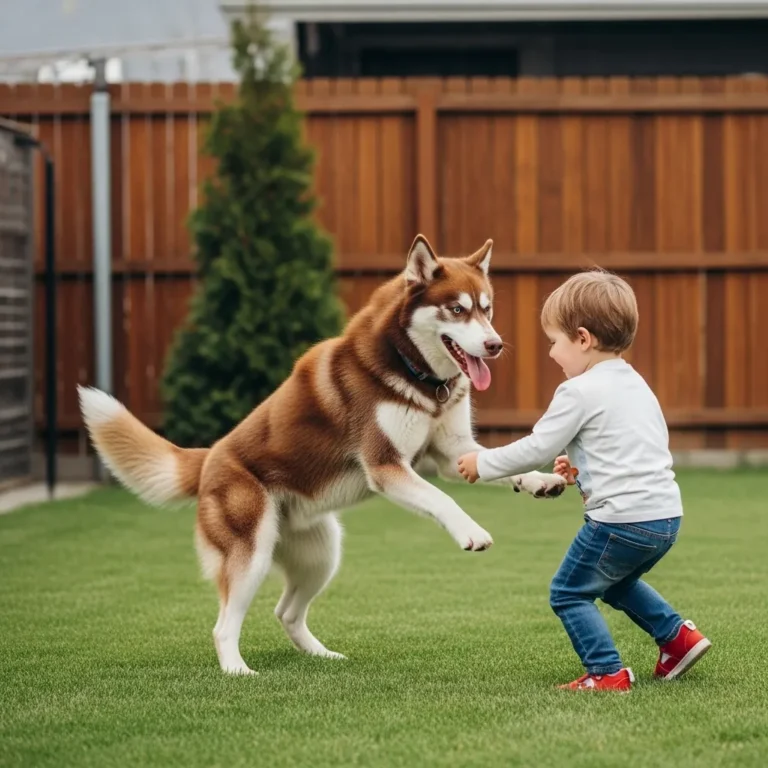
Yes—if your family has the right lifestyle. They enjoy human company, are great with people, and because they’re so expressive, they often form strong bonds with children and adults alike. As one husky care site notes:
“They are great family dogs, especially with children and other dogs.” According to Pawlicy Advisor
But—and this is important—they also require:
- Lots of exercise (physical + mental)
- Secure fencing (they are escape artists)
- Access to the family (not left alone for hours)
If your family is active, loves outdoor time, has space and is committed to interactive care, a brown husky can be an amazing companion. If your routine is more sedentary or you’re away many hours, it may not be the best match.
Do brown huskies bark a lot?
Interestingly, huskies in general are less bark-centric than many other breeds—but they make up for it in other ways. For instance:
- One expert site says: “Huskies don’t tend to bark as a rule but they do howl.” According to Hill’s Pet Nutrition+1
- Another site focused specifically on brown huskies notes: “Brown Huskies also are very vocal … they dislike being confined and can exhibit intense whining in a crate or exercise pen.” According to Spirit Dog Training
So while you won’t necessarily hear a constant “woof-woof!”, you should expect howls, yodels, vocalisations—especially if they’re bored or want attention.
In an apartment setting or attached-wall neighbours, this can become an issue.
Are brown huskies easy to train?
“Easy” isn’t quite the right word—“trainable” yes, but it takes the right approach. According to breed guides:
- Husky intelligence is high, but so is independence (and occasional stubbornness). According to Pawlicy Advisor+1
- Recall training is especially important because huskies will run if given the chance. Escape artistry is real.According to huskyhouse.org
- Brown-husky-specific sources emphasise that because of their strong prey drive and energy, they need mental stimulation, consistent effort and positive reinforcement. According to Spirit Dog Training
So training isn’t effortless—but with a firm, kind, consistent approach, yes, your brown husky can learn commands, house manners, agility tasks, etc.
If you’re new to dog training, you might need some extra support, but the effort is well rewarded.
III. Care & Health of Brown Huskies
Do brown huskies shed a lot?
Unfortunately, yes—they shed a lot. And importantly, their shedding is not reduced because of the brown coat. According to one specialist:
“As all colors of Husky, brown Huskies shed a lot! … You need to brush your Husky several times a week to get the shedding under control.” According to Spirit Dog Training
The double coat (dense undercoat + guard hairs) is part of what makes the husky look spectacular—and also part of what generates heavy shedding, twice a year especially (the “blow-out” periods). According to Hill’s Pet Nutrition
Practical tip: if you’re not up for frequent brushing, vacuuming, managing hair around the home—then a husky (brown or otherwise) may create more work than expected.
How much exercise do brown huskies need?
Quite a lot. The same rule applies: they are a working breed at heart, designed for long runs, sled pulling, active engagement. One source suggests:
“You should plan to provide at least 2 hours of activity to your Husky every day. … mental as well as physical exercise!” According to Spirit Dog Training
Another: adults need around 40+ minutes daily (though many watchers say more is needed if you want a well-balanced life). According to Hill’s Pet Nutrition
So if you’re thinking of a brown husky, think about running, hiking, walk plus play, off-leash in safe areas, training games—all combined. Without that, they may turn to mischief.
What are common health issues for brown huskies?
Since brown huskies are fundamentally the same breed as other huskies, the health concerns align with those of the Siberian Husky in general. According to one resource:
- Eye issues: cataracts, Progressive Retinal Atrophy (PRA) – and brown husky-specific source highlights this too.According to Spirit Dog Training+1
- Hip dysplasia, autoimmune diseases, thyroid conditions—these are seen in huskies broadly. According to PetMD
- Because of their high activity, also pacing, joint wear, injuries from rough play can appear earlier if not managed.
One additional note: the brown colour doesn’t inherently add extra health risk—but because deeper pigment may reflect different gene expressions, a reputable breeder will check for genetic health, clearances, etc.
How long do brown huskies live?
Typically, you can expect a lifespan similar to other huskies: often around 12-15 years if healthy, well-cared-for, and is not subject to major illness. One review of the breed says:
“Although medium-sized breeds typically live between 10 and 13 years, the Siberian Husky itself has a longer life expectancy … typically living from 12 to 15 years.” According to Pawlicy Advisor
As always: quality of diet, exercise, veterinary care, genetics—all matter. A brown husky with good lineage and proper care has every chance of reaching the upper side of that range.
What kind of diet is best for a brown husky?
Because brown huskies share the same physiology as other huskies, diet advice aligns:
- High-quality dog food (dry kibble, wet food or a mix) with good protein, moderate-to-high activity formula. The brown-husky-specific guide says: “Feeding your Husky a nutritious and balanced diet will contribute to his long-term health and well-being.” According to Spirit Dog Training
- Because they can be very active, some huskies require higher caloric intake—but avoid overfeeding, since they may not gain weight easily but can store fat if under-exercised. According to Hill’s Pet Nutrition
- Good fats (omega-3/6) help maintain a lush coat (especially in a darker-toned coat where shine is noticeable). Plenty of fresh water, avoid extreme diets unless under veterinary supervision.
In other words: treat the brown husky as you would any high-energy medium-size breed—with a diet to match activity, not just size.
related: Bland Diet for Dogs with Diarrhea or Colitis & pancreatitis
How do you groom a brown husky?

Grooming is more involved than some short-coated breeds. Here’s what you want to make sure of:
- Brush several times a week, and more frequently (daily) during shedding “blow-outs.” Brown-husky-specific article emphasises this. According to Spirit Dog Training
- Bathing: huskies are fairly self-cleaning and don’t need frequent baths—but when you do bathe, make sure you dry the undercoat thoroughly (especially in humid climates) to avoid damp/skin issues. According to Pawlicy Advisor
- Pay attention to ears (upright but can collect debris), nails (since active dogs often wear but still needs check), teeth (standard hygiene)
- In warm climates (which especially may apply depending on where you are), ensure the dog doesn’t overheat. Because they have a thick coat, even brown-toned huskies will prefer cooler spots, shade, ventilation.
If you’re willing to invest the grooming time (it’s part of the charm), you’ll find this is manageable—but worth factoring in.
IV. Finding & Owning a Brown Husky
How much does a brown husky puppy cost?
Prices vary widely by location, breeder reputation, lineage (health clearances, coat colour rarity), and whether the dog is show-quality or pet-quality. While I can’t guarantee exact numbers (they fluctuate), here are guidelines:
- The “Solid Brown Husky” listing by a breeder mentions their bloodlines and generational lineage, suggesting higher cost for rarity. According to Husky Palace
- In general, husky puppies from reputable breeders (all colours) might run several hundred to a few thousand dollars (or equivalent in local currency) depending on country.
When you factor in shipping/import (if needed), vaccination, initial vet care, microchipping, the full “first year cost” often doubles the purchase price. My friendly advice:
set a budget, ask the breeder for transparent breakdowns, health clearances, and don’t base purchase on colour alone.
Where can I find a brown husky breeder?
When hunting for a brown husky, you’ll want to use standard safe practices (applicable for any breed) plus extra care because of colour premium and rarity. Look for:
- Reputable breeder with transparent health testing (hips, eyes, genetic screens)
- Clear documentation showing the puppy’s lineage, coat genetics (since you want authenticity)
- Opportunities to meet the puppy’s parents, see living conditions, ask about temperament of previous litters
- References from past buyers
- Avoid breeders who guarantee “rare colour at any cost” without clear proof—this can be a red flag for puppies bred primarily for colour rather than health or temperament.
Also consider rescue and re-home groups: sometimes brown-toned huskies may be available for adoption (though rarer).
Are brown huskies good for first-time dog owners?
This depends a lot on the first-time owner’s lifestyle, resources and willingness to learn. Key considerations:
Pros:
- Beautiful, charismatic breed that forms strong bonds
- If the owner is active and ready for a sport- or adventure-dog companion, it can be a rewarding journey
Challenges: - High exercise needs (if unmet: destructive behaviour)
- Strong personality and independence—training needs consistency from day one
- Grooming & shedding demands can surprise first-time owners
- If your living situation is constrained (small flat, busy travel schedule, less availability for walks), this breed may be more work than expected.
Given those, if you’re a first-time owner and you live in a house with yard, have time for training and exercise, and are ready for commitment—yes, a brown husky can work.
If your situation is less ideal, it might be wise to start with a lower-energy breed or get professional training support.
Do brown huskies do well in apartments?
Generally speaking: not ideal—but it can be done if certain conditions are met. Reasons they struggle:
- They need space to run and “blow off steam”
- Vibrant energy + vocal nature (howling/yodeling) can challenge neighbours in shared-wall apartments According to Spirit Dog Training
- Fenced secure outdoor space is preferred because of their escape-artist tendencies According to huskyhouse.org
If you live in an apartment and want a brown husky, you’ll need to commit to: multiple long walks per day + off-leash safe runs, mental stimulation, a very secure building (preferably ground floor with outdoor access), noise-consideration for neighbours. If you can meet those, it’s possible—but if not, a brown husky may be a stressor for both you and the dog.
Conclusion
A siberian husky brown is more than just a colour variant—it’s a living, breathing companion with the heart, soul and requirements of the beloved Siberian Husky breed, plus a coat that often turns heads and sparks conversations. If you’re drawn to the look, the energy, the personality, and you’re ready for a commitment—then you may find in a brown husky a vibrant, affectionate, and stunning friend.
On the other hand, if you’re looking for “easy low-maintenance,” a brown husky dog (or any husky) may demand more than expected—in exercise, grooming, space, training. It’s a choice that rewards richly, but one that asks for sincerity and preparation.
So whether you’re already planning for one, just dreaming of one, or comparing breeds: remember that colour is part of the charm—but the lifestyle match is what will truly make it a great fit for both of you.
Notice : The DogsBlogSS editorial team is dedicated to providing accurate, research-based information about dog health, behavior, and care. All our articles are fact-checked using trusted veterinary sources such as VCA Hospitals, Merck Vet Manual, and the AKC.
you may like it
